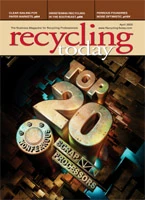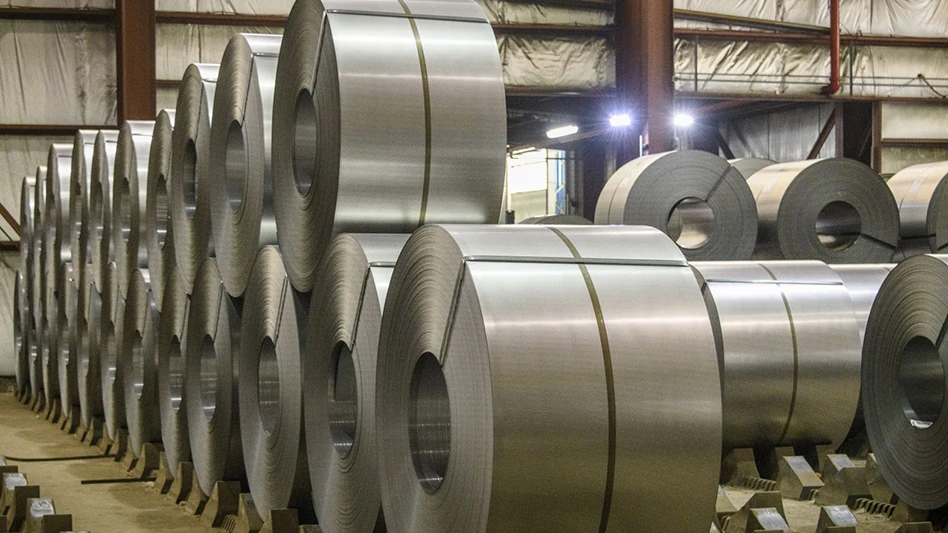
When the Asian tsunami struck suddenly last Dec. 26, the world was stunned and shocked by the enormity of this unusual natural disaster. By some estimates, more than 200,000 people in
11 countries perished within minutes, while millions more were left homeless. Whole towns and villages were completely washed off the map.
With a disaster best described as "biblical" in nature, the world has responded as it had never done before. The largest relief effort in recorded human history was set in motion, with governments, companies and private individuals around the world offering contributions. Within weeks, the United Nations received $1 billion in cash and an additional $5 billion had been pledged to the organization.
Emergency needs were the first priority: food, clean drinking water, medical care, shelter, disposal of dead bodies and counseling for the survivors, many of whom were traumatized by the loss of their entire families and their livelihoods.
In the days that followed, this unprecedented relief effort was widely publicized throughout the world. Since then, however, the 24-hour news cycle has taken the tsunami story out of the spotlight. Extraordinary efforts have continued, however, with the sheer size and scope of the needs prompting some seriously creative thinking on the part of those involved in the cleanup. One such program begun recently in Indonesia has put recycling at the forefront of immediate, medium-range and long-term recovery efforts.
AT THE EPICENTER. This past February, the United Nations Development Program (UNDP), in cooperation with the Indonesian government, began implementing a pilot recycling project in the ravaged city of Banda Aceh.
Banda Aceh, along with the city of Meboulah, was at the epicenter of the earthquake and was hardest hit by the tsunami. A great majority of the estimated 200,000 people who died in Indonesia came from these two towns. The tsunami also left behind a massive trail of physical destruction.
"The waste generated by the tsunami in Banda Aceh alone would equal a pile about three football fields long, three football fields wide and three stories high," Tim Walsh, the UNDP’s waste management adviser, says. "It’s equivalent to the amount of rubbish a city the size of Banda Aceh would generate in 20 years."
He adds, "You have scrap from cars, refrigerators, wood, glass, you name it. Whole houses have been washed away. Whatever would be inside a house or building, that’s what you have here."

In total Walsh estimates that in Banda Aceh alone, between 7 million and 10 million cubic meters of waste material was generated by the tsunami. It’s not surprising, then, that within days of the disaster, survivors were already picking through the vast amounts of rubble, scavenging for anything which they could sell in order to survive.
The UNDP decided to make it formal. "We’re going to pay them to do what they’re already doing," Walsh says.
| Donations Welcome |
|
Cash contributions constitute the most effective way to help affected countries in their reconstruction efforts. Companies can help by contributing cash or in-kind assistance. To contribute cash, please go online to the UN Foundation, which will forward donations to United Nations Development Program. Checks and money orders (with a notation that they are for the UNDP Tsunami Relief Effort) can be sent to the UN Foundation, 1225 Connecticut Ave. N.W., Fourth Floor, Washington, DC 20036. |
The program began with 100 people in Banda Aceh, who were hired to start collecting and sorting the various waste materials and scrap strewn everywhere. The project aims to spread across the province of 4.1 million, eventually employing up to 500 people.
During visits to the temporary camps and other locations housing those made homeless by the disaster, local NGOs (non-government organizations) recruit workers, signing up those who are able to and who want to work. Buses and trucks pick them up daily, and the UNDP provides them with suitable equipment, like protective clothing, boots and face masks. The workers are also vaccinated against diseases such as tetanus. Under contracts with the UNDP that last from three to six months, the workers are paid the fair local wage of $3.30 a day and a food stipend.
The UNDP has identified a list of materials suitable for either reuse or recycling, including concrete, wood, dirt, plastic, steel, copper, aluminum and organics. Workers are sorting all the recovered materials to be sold for recycling (plastic and metal), for use as compost for land regeneration (organic waste) or as fill for eroded areas (dirt, crushed concrete and stone) or for the immediate reuse in construction of homes (bricks and wood). Heavy machinery is also being used to make the operation safer and more efficient.
The benefits of the project are at first economic. Most of those employed have no other means of earning any money.
There are also psychological benefits. Having lost not only their homes and their livelihoods, but also their families, many of the survivors are deeply traumatized. The cash-for-work plan gives people something to do and a purpose as well: They can contribute to the recovery and reconstruction of their city.
"My son and two of my granddaughters died in the tsunami, so now there is only me, my wife and one grandson left," says 54-year-old Cut Neh, who helped clear the local hospital of debris and mud. "Our house was destroyed, too, so we are living with other relatives at the moment. Before the tsunami I was selling bananas, but now I have no job. I’m very grateful for the chance to work, because this money is needed to support all of us."
LONG-TERM PLANNING. The UNDP recycling program, however, has its sights set beyond just the short and medium term. Walsh says his goal in the next two years is to create waste transfer stations, where debris and scrap are sorted and then brought to the proper sights.
"In the third world, there’s already a lot of informal recycling that goes on anyway," he says. "Waste gets thrown into dumps and everything of value gets picked out and sold. We need to give the scavengers the access to the waste, pay them to sort it, but then help them find a market. It has to be organized, safer and sustainable," he says.
"We prefer that the waste is kept here and recycled here," Walsh says. "Obviously building a metal recycling facility might not be cost effective. There could be a big need and possibility for synthetic bricks, or the setting up of a plastic facility. There would be a ready market right here for that."
With the sheer size and scope of the disaster, the UNDP is seeking help and advice from people in the industry.
"We are seeking ideas from the private sector," Walsh says. "The private sector has all the good ideas." It also has the tools. The program needs rock crushers, wood shredders and chippers, screening machinery, equipment for making synthetic building materials and anything that can help extract the materials from the massive piles of debris.
Recycling plays a number of roles in reconstructing the areas, Walsh says. "Recycling reduces the need for landfill space. It will also make materials available that can be used in the reconstruction of shelters and houses. There will be a huge demand for building materials here for the next five to 10 years, he says."
Interestingly, Walsh says, the epic size of the disaster and the resulting outpouring of cash and concern from around the world is helping to bring together two facets of today’s world not normally considered compatible—the desire to help the victims and the bottom-line of business.
"Is recycling economically sound? Generally yes. But if it’s just a pile of rubbish, it probably won’t get recycled," Walsh says. "Now there’s a will to do it. It can’t be left where it is. We need to institute livelihood projects, to improve the quality of life over what it was before."
He adds, "Immediately after the tsunami, there’s been an immediate need to inject cash into the economy."
Walsh says that in the medium- to long-term, recycling is safer than leaving the debris there. "It’s also better than sourcing new materials."
Walsh says the residents of Banda Aceh "love" the recycling program, as do the donors and industry.
"Recycling makes good sense for the community, for the environment and for public health," he says.
Ted Lerner is an American journalist based in the Philippines. He is a freelance writer and the author of the travel narratives The Traveler and the Gate Checkers and Hey, Joe. He can be e-mail at ted@hey-joe.net.

Explore the April 2005 Issue
Check out more from this issue and find your next story to read.
Latest from Recycling Today
- Fitch Ratings sees reasons for steel optimism in 2025
- P+PB adds new board members
- BlueScope, BHP & Rio Tinto select site for electric smelting furnace pilot plant
- Magnomer joins Canada Plastics Pact
- Out of touch with reality
- Electra names new CFO
- WM of Pennsylvania awarded RNG vehicle funding
- Nucor receives West Virginia funding assist





